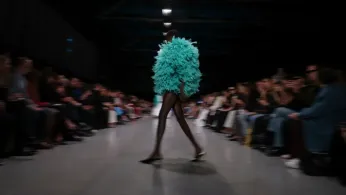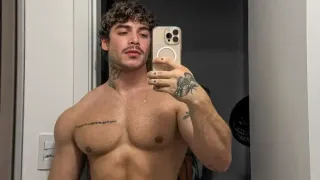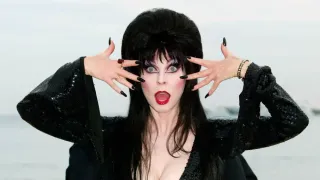
5 hours ago
Helen Mirren Opens Stella McCartney’s Activist, Cruelty-Free Paris Runway
Thomas Adamson READ TIME: 2 MIN.
Inside the Centre Pompidou, Helen Mirren opened Stella McCartney ’s Paris Fashion Week show with a spoken rendition of The Beatles ’ “Come Together.” Less performance than manifesto, it set the tone for a Tuesday night collection framed around humanity, animals and Mother Earth.
McCartney has long been ahead of the curve in fashion’s sustainability push. This season she claimed her most conscious offering yet: 98% sustainable, 100% cruelty-free. No leather, no fur, no feathers, no exotic skins. Instead came world-first innovations: FEVVERS, a plant-based alternative to feathers, and PURE.TECH, a programmable fabric that absorbs pollutants from the air.
If the message was serious, the mood was not. A pounding bass line and rave-like lights kept energy high as Robin Wright, Dylan Penn and Johnny Depp watched from the front row.
McCartney’s silhouettes explored opposites — masculine and feminine, grounded and ethereal. Savile Row tailoring was deconstructed: double-breasted jackets sliced open at the sides, draped with dropped lapels, worn over pleated wide trousers and ’80s Italian-inspired shirting. Cargo codes reappeared in crisp minis fringed with airy crinoline.
Colors shifted from candy pinks, lavenders and blues into khaki, corporate gray and pecan. Upcycling was visible. Denim waistbands collaged into dresses, bags and even platform shoes. Sequins glimmered across Falabella clutches and hand-embroidered denim. Evening pared back to sculptural satin gowns and corseted draping animated by the new feather substitute.
The collection captured McCartney’s recurring aesthetic — eco-lux innovation, ’80s-inflected power dressing, activist theater softened by British wit.
At times the campaigning risks overwhelming the clothes, her shows veering into didactic spectacle.
Still, Tuesday night confirmed why McCartney remains unique after two decades — she can merge spectacle and conscience, sustainability and desirability, daring her audience to imagine fashion that doesn’t just dress the body, but tries to heal the planet.






